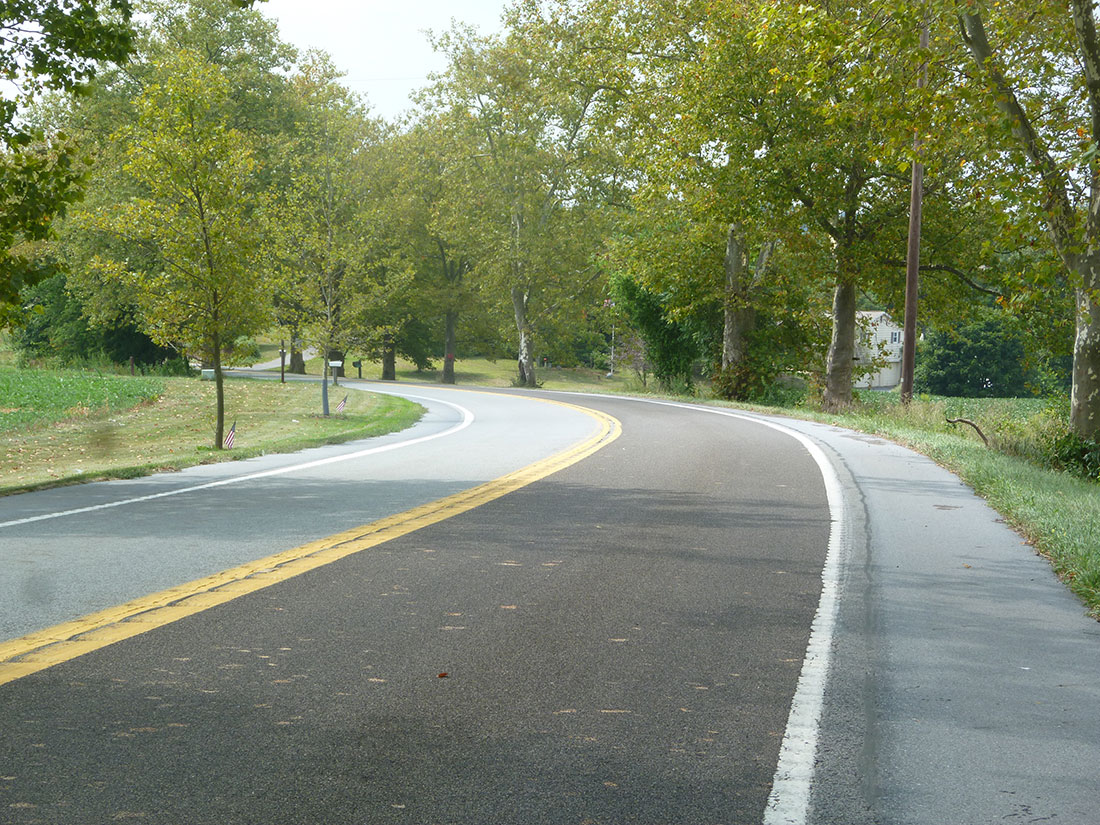August 13, 2020
Innovation of the Month:
Focus on Reducing Rural Roadway Departures
Last week, we discussed the pillar of the Focus on Reducing Rural Roadway Departures (FoRRRwD) initiative which looks beyond the State highway system to focus on all public roads. The next pillar we will discuss is countermeasures—the cost-effective treatments proven to reduce rural roadway departure crashes.
The benefits for installing these countermeasures outweigh the costs for installation and maintenance, and can be maximized with a systemic approach to deployment. The countermeasures you select can either help keep vehicles in their lanes, or reduce the potential for crashes, or minimize crash severity when crashes do occur.
Signs and markings are often the first countermeasures considered because they are also very adaptable and easy to implement. For example, you can widen edge lines or use delineators on gravel roads, or select a variety of options to emphasize sharp curves. Implementing these countermeasures assists drivers to navigate both day and night.
Other proven countermeasures are applied to paved surfaces - SafetyEdge℠, rumble strips, and friction improvement treatments. Pavement friction is critical at curves, where friction is most needed and where it tends to be least available, because it wears quickly due to turning maneuvers. High friction surface treatment (HFST) can provide a long lasting solution if placed on pavement in good condition. With a benefit cost ratio of 6:1, HFST is proven to be very effective at curves: 57 percent overall crash reduction and 83 percent reduction in wet weather crashes.

The Pennsylvania Department of Transportation (PennDOT) installed their first HFST project in 2006. Since then, PennDOT has installed over 400 HFST locations with over 10 years of severe winter conditions exposure with minimal failure rate. An analysis of 15 sites found HFST reduced crashes by 49 per year and saved $5 million—while costing only $262,000 to install. HFST reduced fatal and major injuries by nearly 1.5 per year.
If you missed the FoRRRwD team’s webinar on friction countermeasures, watch it here. To learn more about countermeasures used in roadway departure safety, please visit the Proven Countermeasures website or contact Cate Satterfield with the FHWA Office of Safety or Dick Albin with the FHWA Resource Center.
Alabama Measures Cost of Delay using Vehicle Probe Data
The Alabama Department of Transportation (ALDOT) is measuring the cost of taking no action when congestion occurs by applying a cost per minute of traveler delay to delays estimated using vehicle probe data. To support this estimation and future data uses, ALDOT matches probe data from INRIX and HERE to their State linear referencing system. The data integration project matches 180,000 roadway segments within the State.
This data integration allows the traffic management center to develop dashboards that show average speeds per mile of road network without the need for roadside sensor infrastructure. The dashboard visualization also helps operators better understand the impact of roadway events and congestion in a larger area.
To learn more about using Crowdsourced data in your agency, please contact James Colyar or Paul Jodoin with the FHWA Office of Operations.
Did You Miss It? – FHWA Innovation Conversations
Last month, we launched a new way to learn about State successes with EDC innovations being deployed in “Innovation Conversations”—an audiocast pairing EDC team leads with practitioners from across the country.
In our first episode, Peter Eun from the Safe Transportation for Every Pedestrian (STEP) team sits down with Mark Cole from the Virginia Department of Transportation (VDOT) to discuss pedestrian safety, VDOT’s Pedestrian Safety Action Plan, and the importance of building a diverse stakeholder group in addressing this issue.
Stay tuned to EDC news for future episodes of Innovation Conversations. Subscribe here to be notified when new episodes launch.
About EDC
Every Day Counts, a State-based program of the Federal Highway Administration’s Center for Accelerating Innovation, works with State, local, and private sector partners to encourage the adoption of proven technologies and innovations to shorten and enhance project delivery.



